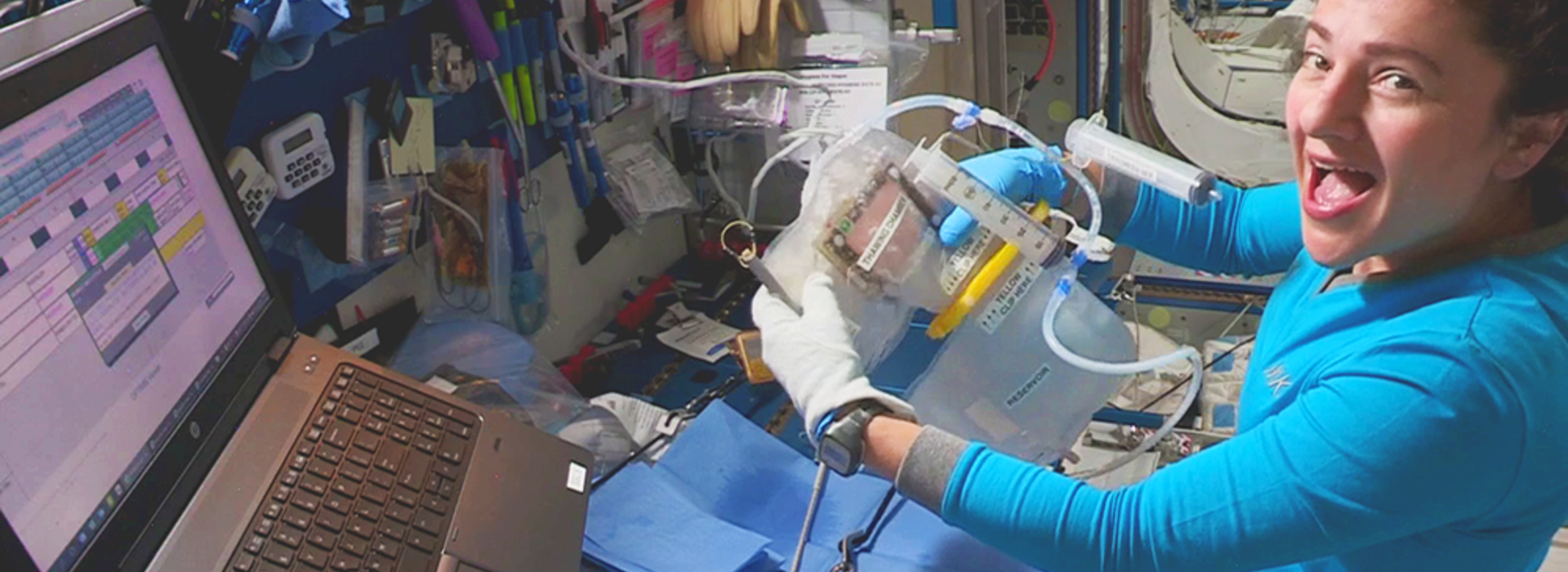
U of M Medical School Experts and NASA Use Space Laboratory to Research Bone Loss
Patients with metabolic osteoporosis, patients on bedrest or astronauts after spaceflight all experience the troubling symptoms of bone loss. If not restored, this can lead to more serious health complications. Experts from the University of Minnesota Medical School and the National Aeronautics and Space Administration (NASA) partnered to embark on an intriguing mission to seek new avenues for the treatment of bone loss: the OsteoOmics Project.
The Antares Rocket Resupply
On Feb. 9, 2020, a Northrop Grumman Antares rocket launched the CRS2 NG-13 (Cygnus) mission out of Wallops Island, Virginia. The rocket carried approximately 8,000 pounds of additional research material to the six-person crew that is currently living and conducting research on NASA’s International Space Station (ISS) National Laboratory on Earth's orbit. This payload included materials for the OsteoOmics Project.
“The Antares launch vehicle plays an important role in bringing a variety of scientific payloads up to the laboratory; this CRS2 NG-13 mission is supporting roughly 20 different spaceship investigations and is also planned to bring new facilities up to space,” said Liz Warren, PhD, associate program scientist for the ISS National Laboratory.
The OsteoOmics Project
Bone loss resulting from spaceflight, bedrest or metabolic osteoporosis can end in catastrophic skeletal morbidities. The OsteoOmics Project was designed to examine bone cells in both microgravity aboard the ISS and in normal gravity to help determine the mechanisms responsible for accelerated bone loss. This could lead to better preventative healthcare and treatments for patients on Earth. Experts examine and compare samples of in vitro osteoblast cell cultures while in three states: in orbit on the ISS, in simulated microgravity and at normal gravity.
"Compared to Earth, the loss of bone is accelerated in space," said Bruce Hammer, PhD, professor in the Department of Radiology and principal investigator of the OsteoOmics Project. "We hope to be able to apply the information we find in these experiments to create new treatments and therapies for patients with osteoporosis and others who are suffering from bone loss.”
The project has the potential to help researchers better understand the reasons astronauts in orbit experience extreme osteopenia, or the beginning of bone loss, and to help identify effective ways to mitigate this for future space explorations.
“The reason for accelerated bone loss in space is controversial, but we do know that removing gravity on bones can increase bone loss. This may be due to osteo-clast activity, which are cells in the bone that dissolve the bone matrix—a very normal function that occurs in bone remodeling,” Dr. Hammer said. “The issue may also be due to derangement in osteocyte signaling. Osteocytes are embedded in the bone matrix and essential for controlling bone formation and resorption.”
Dr. Hammer and experts are monitoring the cells’ genomic and metabolic response to microgravity aboard the ISS and comparing it to experiments on the ground using a magnetic levitation device to simulate microgravity, which is located in Dr. Hammer’s laboratory. The ability for scientists to see enhanced bone loss in actual and simulated microgravity environments offers a more sensitive and accelerated setting to test new therapies on, and thus increasing scientific understanding of osteoporosis on Earth.
This project will generate important insights into the molecular mechanisms relevant to the production of bone matrix which can lead to molecular targeting of diseases such as osteopenia and osteoporosis. These new possible therapeutic approaches may have enormous scientific, human-health and economic benefits.
You can watch a short video about the OsteoOmics Project here, or read more about the other experiments onboard the ISS here.